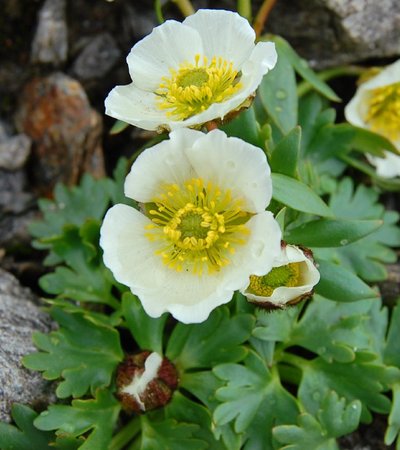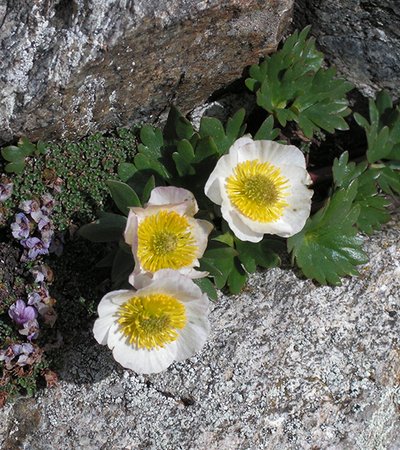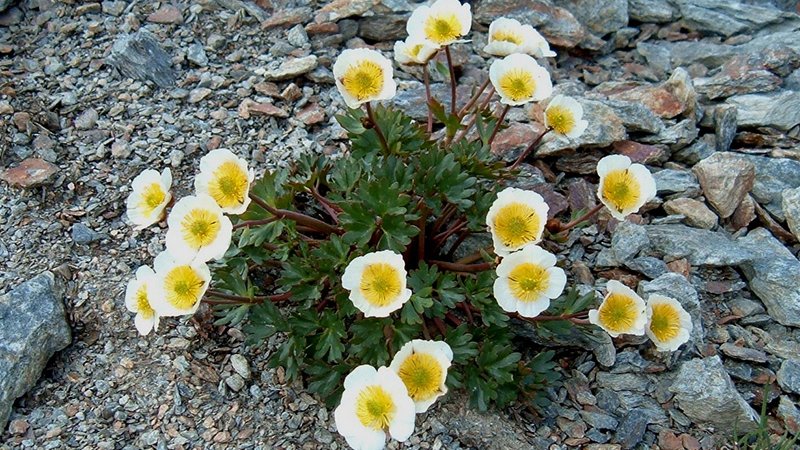(Ranunculus glacialis)
Distribution/habitat
The glacier buttercup is one of the most cold- resistant plants altogether. Its dispersal area spans from the Alps across the Pyrenees and the Carpathians all the way into Arctic regions. In the Western Alps, on Finsteraarhorn in Bernese Oberland/Switzerland, it thrives at altitudes up to 4,270 m and is thus the highest ascending flowering plants in all of the Alps.
Description/characteristics
The glacial buttercup is a perennial plant, which needs to two to three vegetation periods to form its first flowers. It grows up to 20 cm high. The striking, basal foliage leaves are roundish, have a fleshy gloss and three deeply gashed leaflets. The petals are initially white, later reddish. The 1 to 2 blossoms are each located at the end of the stalk.
Special features
The glacier buttercup is a pioneer plant. As a so-called “scree-creeper” it populates nutrient-poor scree fields. This means the plants sit on top of the scree, but form creeping shoots with which they root deep down in the soil. Even though it is exposed to severe frost during the around three-month vegetation period, its leaves are not specially adapted to withstand stress from cold.
Endangerment/protection
In North Tyrol, the glacier buttercup is under conservation and must thus not be picked. Its populations are endangered by advancing climate change.
Literature
Schönswetter, P., Tribsch, A., Stehlik, I. & Niklfeld, H. (2004): Glacial history of high alpine Ranunculus glacialis (Ranunculaceae) in the European Alps in a comparative phylogeografical context. Biological Journal of the Linnean Society, 81, 183–195.



 Natur im Fokus "Gletscher Hahnenfuß"
Natur im Fokus "Gletscher Hahnenfuß"










